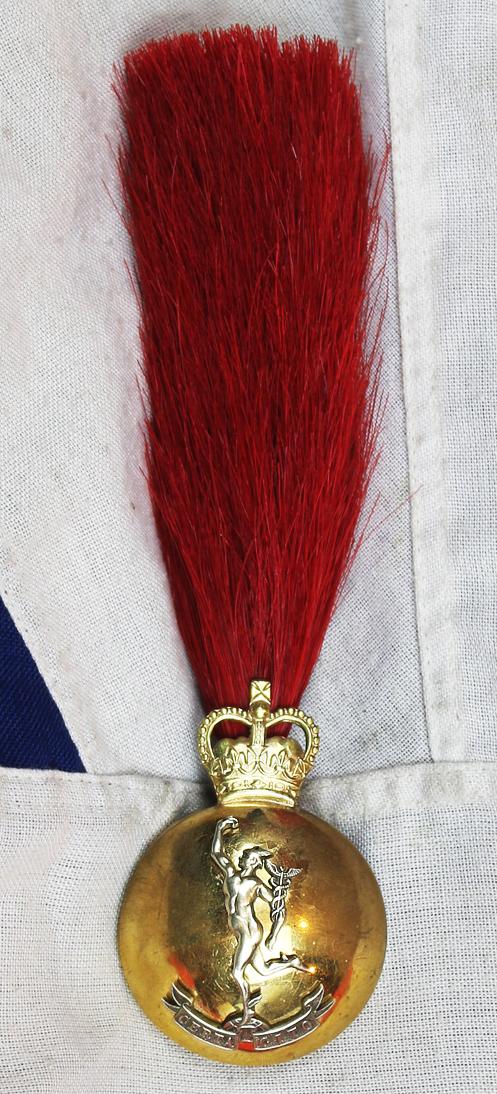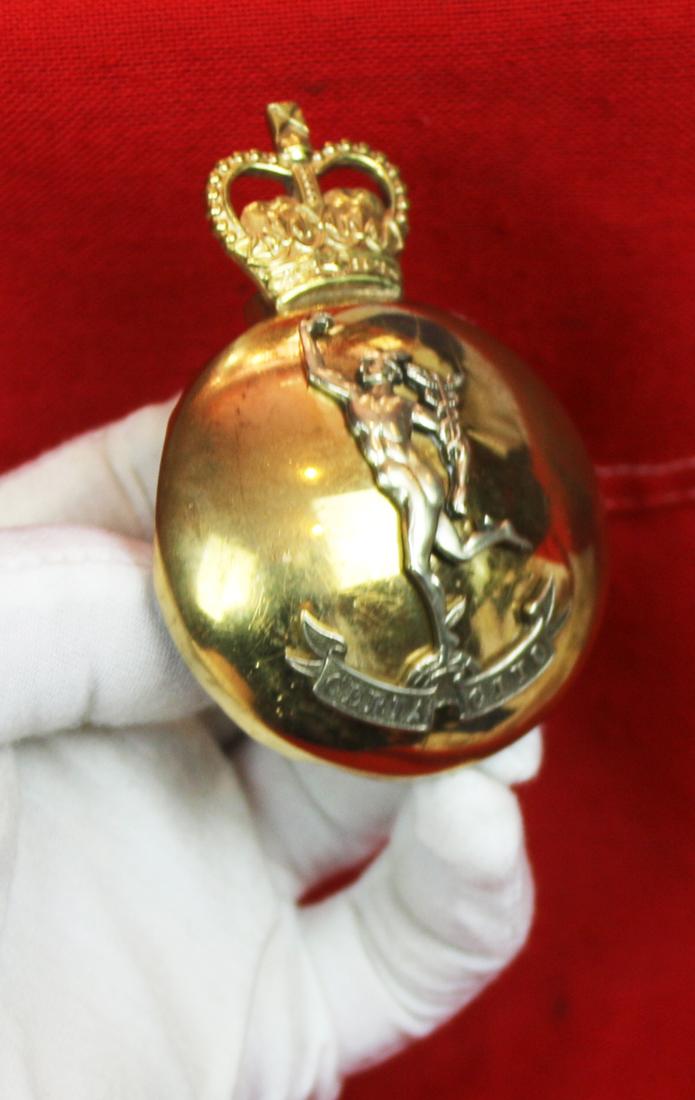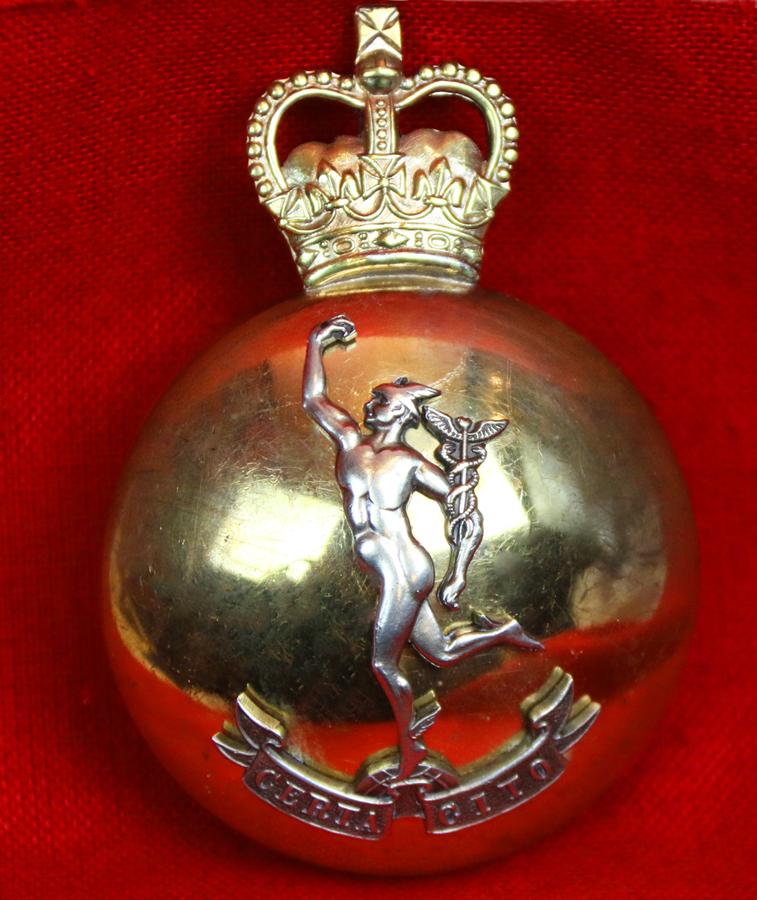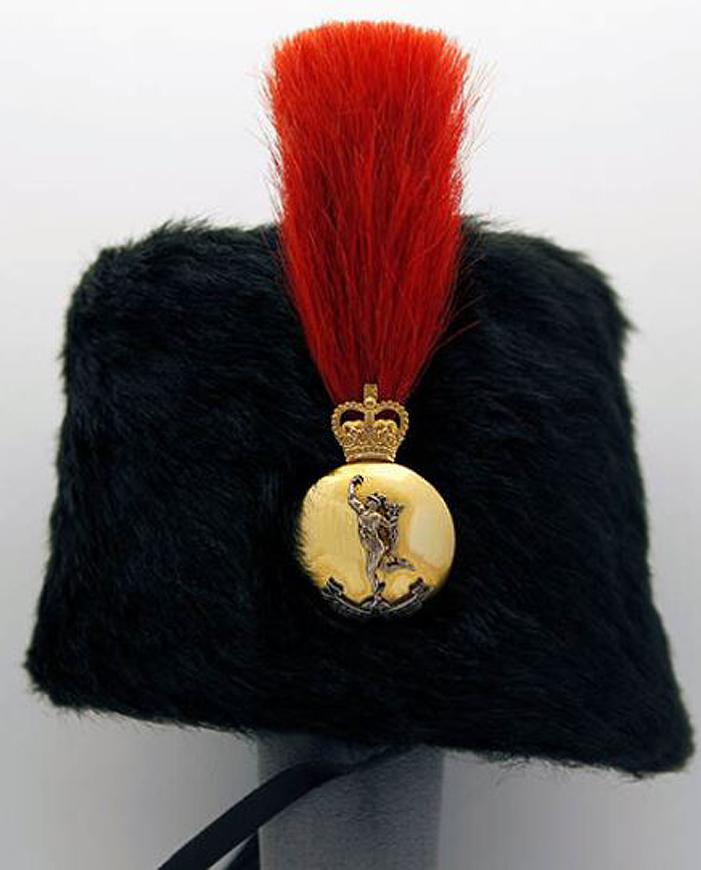Badge with Scarlet Horse Hair Plume of the Officer of The Band of the Royal Corps of Signals, 1950's
The wearing of Full Dress uniform by Officers of the Corps was approved by His Majesty King George V and authorised by the Corps Committee on the 11th June 1930. Officer's Full Dress uniform included the wearing of the Busby and Badge complete with Scarlet Plume. During the pre-war period the Corps Band, when wearing Full Dress uniform, also wore the Busby and Badge with the Scarlet horse hair plume. In the gallery is the 1930 Officer's Full Dress approved pattern busby and plumed badge of the 1950's, our badge does not come with the busby. This Busby Badge, is also dating from 1950's, has the St Edwards Crown with the red horse hair plume behind.
This pattern of plume holder will now be changed very soon for the design designated for His Majesty King Charles III. The crown will be changed to the single domed crown of all the kings since Edward VIIth. The domed crown is called either The King’s Crown or the Imperial State Crown. The late Queen’s double domed crown, is known as St Edwards Crown.
Communications have always been, and are still a vital part of the Army’s fighting power. Only with clear and trusted communications can commanders support, control, and lead their units and soldiers. The evolution of electrical communications in the last 150 years has been one of the most important developments humanity has ever witnessed. As the advantages from ever more complex equipment became apparent, the need for a technical arm of the Army who specialised in communication systems, became apparent. The Royal Corps of Signals was founded in 1920 and since its founding the Corps has been leading the development of communications; delivering them in a variety of operational theatres.
1854
The first use of the electric telegraph in the Crimean War enabled Army commanders to report daily to London.
1899
Field telephones and wireless communications are deployed for the first time in the Boer war.
1914-1918
The Fuller phone containing a form of mechanical encryption is developed to prevent interception of line communication.
9 inches long overall including plume
Code: 24295






